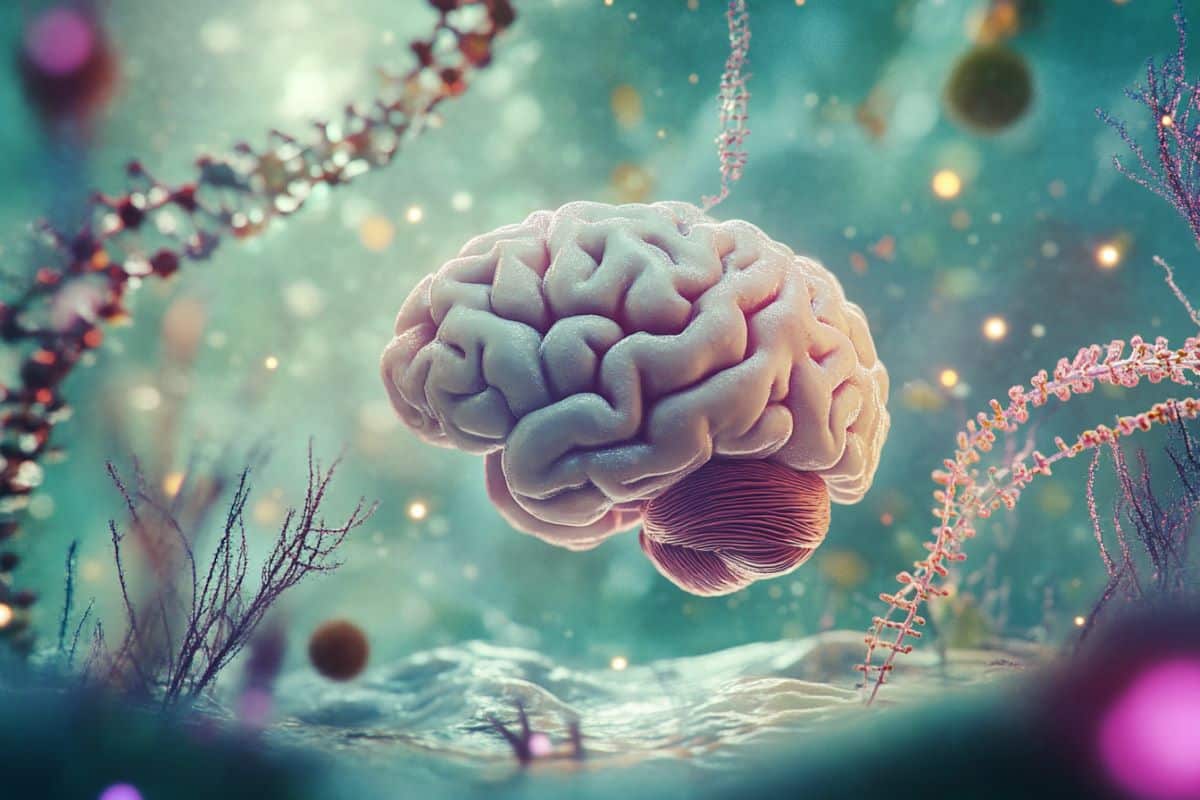Summary: Researchers have uncovered a molecular mechanism linking alterations in the neuronal protein CPEB4 to idiopathic autism, which accounts for 80% of autism cases without a clear genetic cause.
The study reveals that the absence of a specific microexon in CPEB4 disrupts the dynamics of molecular condensates in neurons, affecting the regulation of genes crucial for brain development. This disruption can lead to reduced protein production, impairing neuronal growth and function.
The findings help explain the complex and varied manifestations of idiopathic autism and open the door to potential therapies by restoring the missing microexon. While the therapeutic approach is in early stages, this discovery provides a promising avenue for addressing autism spectrum disorders.
Key Facts:
- The absence of a critical microexon in the neuronal protein CPEB4 disrupts gene regulation.
- Improper CPEB4 function affects neuronal development and may lead to idiopathic autism.
- Researchers propose a potential therapy to restore CPEB4 function by reintroducing the microexon.
Source: IRB
Autism is a neurodevelopmental disorder characterised by difficulties in communication and social behaviour. Approximately 20% of cases are linked to a specific genetic mutation, but the origin of the remaining 80%, known as idiopathic autism, remains a mystery.
A team of scientists led by Drs. Raúl Méndez and Xavier Salvatella at the Institute for Research in Biomedicine (IRB Barcelona) has identified a molecular mechanism that explains why certain alternations of the neuronal protein CPEB4 are associated with idiopathic autism.

The study is based on previous work published in 2018 that identified CPEB4 as a key protein in the regulation of neuronal proteins related to autism. Back in 2018, the researchers observed that, in individuals with autism, the CPEB4 protein lacked a specific neuronal microexon — a tiny segment of genetic material crucial for protein function in the neurons.
The work published today in the journal Nature reveals that this small fragment is key for neuronal activity because it preserves the flexibility of CPEB4 to assemble into condensates and disassemble them.
“This study provides new insights into how small modifications in proteins that regulate gene expression can have a significant impact on neuronal development, opening new avenues to explore future therapies,” explains Dr. Méndez, ICREA researcher and head of the Translational Control of Cell Cycle and Differentiation laboratory at IRB Barcelona.
Molecular condensates and gene regulation
The region of the CPEB4 protein that holds the segment lacks a well-defined three-dimensional structure. Proteins with disordered regions can form condensates, which are like small droplets within the cell where molecules, such as messenger RNAs (mRNAs) that code for other proteins involved in neuronal function, are stored in a silenced state.
These condensates can assemble and disassemble in response to cellular signals, enabling dynamic regulation of gene expression.
“In this study, we’ve discovered that this neuronal microexon is crucial for maintaining the stability and dynamics of the condensates formed by CPEB4 in neurons. Without the microexon, the condensates are less dynamic and can form solid aggregates that don’t work correctly,” says Dr. Salvatella, ICREA researcher and head of the Laboratory of Molecular Biophysics at IRB Barcelona.
This lack of dynamism prevents the mRNAs stored in these condensates from being released when neurons are stimulated, leading to a decrease in the production of proteins essential for neuronal development and function.
Among these mRNA molecules are many of the genes that have previously been linked to autism.
Implications for neuronal development
Proper regulation of these genes is essential during brain development. If these CPEB4 condensates do not function correctly due to the absence of the neuronal microexon, it can lead to disruptions of neuronal development, which are manifested as symptoms of autism.
The described mechanism also helps to explain the complexity and heterogeneous nature of idiopathic autism, as this spectrum includes multiple manifestations and varying degrees of severity.
“Our results suggest that even small decreases in the percentage of microexon inclusion can have significant effects. This would explain why some individuals without a gene mutation develop idiopathic autism,” explain Drs. Carla Garcia-Cabau and Anna Bartomeu, IRB Barcelona researchers and first authors of the study.
The concept proposed in this study of gene regulation in neurons through the formation of condensates may also have implications for ageing.
Over time, these condensates lose their plasticity, meaning their capacity to assemble and disassemble, which could impair proper neuronal function and promote the development of neurodegenerative diseases.
Possible avenues for future therapies
One of the promising findings of the study is that microexon 4 appears to work “in trans”, which means that it might be possible to introduce this small sequence of amino acids into cells to partially restore CPEB4 function and potentially reverse the symptoms.
“Although we’re still in exploratory stages, this discovery is promising and points to a potential therapeutic approach that could restore CPEB4 function,” says Dr. Méndez.
The researchers emphasise that this finding still requires extensive experimental testing, such as studies in animal models and overcoming multiple technical barriers.
Interdisciplinary collaboration and future research
This study is a notable example of how interdisciplinary collaboration can lead to significant advancements in the understanding of complex diseases. By combining approaches from biochemistry, cell biology, biophysics, and neuroscience, the team at IRB Barcelona has managed to unravel a mechanism that could have profound implications for idiopathic autism.
“It’s an achievement that reflects the strength of working in an environment that fosters interaction between different disciplines,” concludes Dr. Salvatella.
“We’ll continue to explore this mechanism and its implications, in the hope that we can eventually turn these findings into benefits for individuals affected by autism.”
The study represents an important step in understanding the molecular mechanisms underlying idiopathic autism and highlights the significance of short genetic sequences in the regulation of critical cellular functions.
While much remains to be investigated, the findings offer a new direction for the development of therapies that could improve the quality of life for many individuals and families affected by autism.
This work has been made possible through the collaboration of several prestigious institutions and scientists. Among them, special mention is given to Dr. José Lucas, from the Centro de Biología Molecular Severo Ochoa (CBM Severo Ochoa) of CSIC/UAM in Madrid, and Dr. Ruben Hervás, from the Li Ka Shing Faculty of Medicine at the University of Hong Kong.
In addition, the research involved groups at the Linderstrøm-Lang Centre for Protein Science of the University of Copenhagen and IBEC. The Centro de Investigación Biomédica en Red del Área de Enfermedades Neurodegenerativas (CIBERNED) of the Instituto de Salud Carlos III, Madrid, University College London, and the University of Barcelona also participated in the work.
Funding: This project has been funded mainly by the State Research Agency (AEI) and the European Research Council (ERC).
About this genetics and autism research news
Author: Nahia Barberia Beloqui
Source: IRB
Contact: Nahia Barberia Beloqui – IRB
Image: The image is credited to Neuroscience News
Original Research: Open access.
“Mis-splicing of a neuronal microexon promotes CPEB4 aggregation in ASD” by Raúl Méndez et al. Nature
Abstract
Mis-splicing of a neuronal microexon promotes CPEB4 aggregation in ASD
The inclusion of microexons by alternative splicing occurs frequently in neuronal proteins. The roles of these sequences are largely unknown, and changes in their degree of inclusion are associated with neurodevelopmental disorders.
We have previously shown that decreased inclusion of a 24-nucleotide neuron-specific microexon in CPEB4, a RNA-binding protein that regulates translation through cytoplasmic changes in poly(A) tail length, is linked to idiopathic autism spectrum disorder (ASD).
Why this microexon is required and how small changes in its degree of inclusion have a dominant-negative effect on the expression of ASD-linked genes is unclear.
Here we show that neuronal CPEB4 forms condensates that dissolve after depolarization, a transition associated with a switch from translational repression to activation.
Heterotypic interactions between the microexon and a cluster of histidine residues prevent the irreversible aggregation of CPEB4 by competing with homotypic interactions between histidine clusters.
We conclude that the microexon is required in neuronal CPEB4 to preserve the reversible regulation of CPEB4-mediated gene expression in response to neuronal stimulation.






